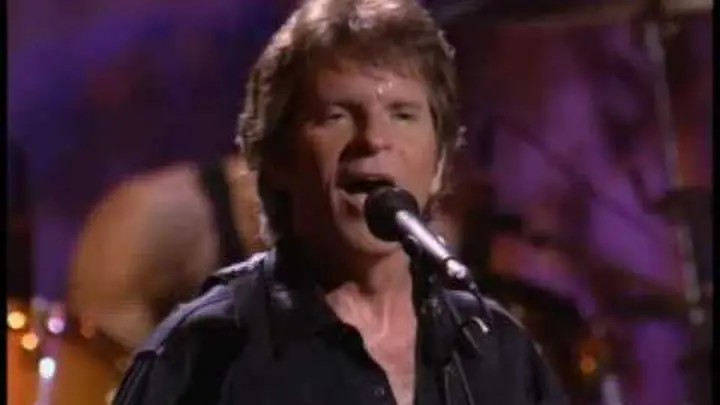
A Lament for a Lost America Seen Through the Flickering Glow of the Cathode Ray
When John Fogerty released “I Saw It on T.V.” as part of his 1985 solo album Centerfield, he wasn’t just returning to music after a long, self-imposed exile—he was resurrecting the voice of a generation that had seen the promise of postwar America transformed into something far more ambiguous. Though never released as a single and thus absent from chart glory, “I Saw It on T.V.” is a quietly devastating piece of songwriting—an elegiac meditation on American innocence, televised illusions, and the fading dreams of the Baby Boom era. Nestled amid the more radio-friendly cuts of Centerfield, this song stands apart: less anthem, more requiem.
At its core, “I Saw It on T.V.” is Fogerty’s reckoning with the dissonance between myth and memory, between what was promised to a generation and what actually came to pass. The track traces an emotional arc through the lens of television—a device that had, by the mid-20th century, become both chronicler and curator of American identity. With each verse, Fogerty stitches together iconic broadcast images: Elvis shaking on Ed Sullivan, the Beatles landing at JFK, the moon landing, soldiers in Vietnam—all moments etched into the cultural consciousness not through direct experience but through their televised form. In this way, Fogerty captures how a generation experienced its own history as spectators to spectacle.
Musically, the song is understated—a melancholic country-rock arrangement that mirrors the reflective tone of its lyrics. Gone are the swampy riffs of Creedence Clearwater Revival, replaced with something leaner, more contemplative. A gently plucked guitar line threads through the track like a memory surfacing from deep within—the past made audible. There’s resignation in Fogerty’s vocal delivery, but also a quiet intensity; he sings as though trying to conjure ghosts from static.
The brilliance of “I Saw It on T.V.” lies in its ability to universalize personal disillusionment. It isn’t just Fogerty’s story—it’s America’s story. The song doesn’t rage or accuse; it reflects. “A man named Kennedy was shot one winter day,” Fogerty sings plainly—no embellishment needed for a moment that still echoes with unresolved grief. He then pivots to Vietnam: “A young man went out and died / His country said he tried.” The lyricism is stark, unadorned, yet heavy with implication: that the grand narrative told through televised images has failed to account for the emotional cost borne by individuals.
By grounding his social commentary in specific generational touchstones, Fogerty transcends nostalgia and ventures into something deeper: mourning—not for youth itself, but for what that youth believed in. In revisiting these iconic scenes through song rather than screen, he reclaims them from passive consumption and imbues them with emotional immediacy.
Decades later, “I Saw It on T.V.” resonates not merely as historical artifact but as a timeless meditation on media, memory, and meaning. It asks us not just what we saw—but what we believed we were seeing—and whether those images ever told us the truth we needed. In that quiet question lies all the ache of an American dream dimmed not by age, but by disillusionment.